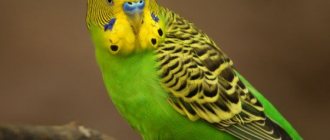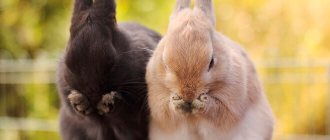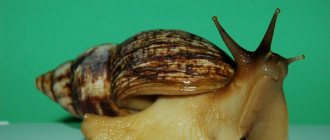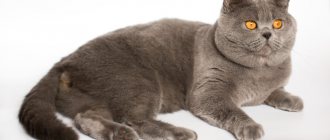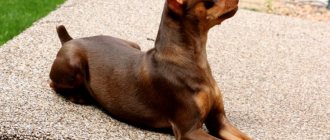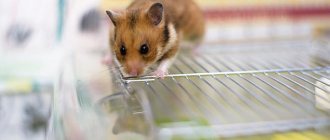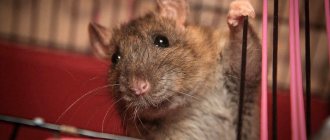Corella parrot: description
Corella parrots have become known to lovers of our country quite recently. Despite this fact, these exotic birds are characterized as quite smart, original and low-problem in keeping.
Intelligence
These birds are deservedly included in the top ten most intelligent birds, which makes it possible to keep them in human conditions without any problems. As the experimental results show, the level of intelligence of this bird is comparable to the level of intelligence of a 5-year-old child.
Appearance and colors
Adult birds of this species grow up to 33 cm including the tail. The tail is quite long and pointed, and the head has a rather high crest. At the same time, the plumage of females and males has differences. Males are characterized by the presence of a brighter, defiant olive-gray shade, while the crest and head are distinguished by the presence of a yellow tint. The wings are more colored in velvet-black tones, with the presence of a bluish or silver color.
Interesting fact! The beak of this bird, both in appearance and in shape, is more reminiscent of the beak of a cockatoo, but at the same time does not differ in size, since it is significantly smaller in size. Despite this, the bird's beak is quite powerful and sharp, since the bird is able to bite through wire, such as electrical wiring.
As for the females, they are characterized by a dirty gray coloring of the main plumage, as well as the presence of a brownish tint on the underside of the body, while the cheeks are painted with spots of a pale brown tint. The head and the crest itself are pale gray with the presence of light yellow tones. The fact that young birds are more similar in color to females is considered characteristic. In this regard, only after a year can the gender of the birds be determined.
Subspecies of Corella parrot
Due to the fact that breeding such birds in captivity is simple, as a result of the work of specialists it was possible to obtain various shades of the birds’ plumage, which further complicated the process of determining the sex of the Corella parrot. The most famous subspecies are:
- The albino cockatiel is a bird with white or cream colored plumage with red eyes. This is due to the complete absence of coloring pigment. The head and crest are distinguished by their yellow color. The female may have pale yellow spots on her wings.
- The cockatiel is white with black eyes, the result of crossing a white female and a gray male. Males of this subspecies are distinguished by the presence of white feathers in the tail, while in females this part is marbled.
- The Lutino Corella is a yellow parrot with red eyes. On the sides of the head, regardless of gender, you can see characteristic bright orange spots.
- The cockatiel is light gray with black eyes. The subspecies was created by crossing a gray and a white parrot. The subspecies is distinguished by the presence of light gray shades in the tail.
- The cockatiel is dark yellowish , although there are subspecies with many variations of similar shades, ranging from dark yellowish to light cream.
Recently, the Corella Sheki bird has appeared, which is characterized by the presence of heterogeneous white spots on its plumage. Many experts believe that this subspecies can serve as a good basis for breeding new subspecies that are very original in color.
Interesting to know! The Sheki subspecies has quite interesting color variations: they can be pearl-gray, white-winged and black-winged, including a black-gray shade with a pure black chest.
Corella - All about the parrot species | Parrot species - Corella
Natural habitats
Being in their natural environment, these birds for their livelihoods choose forest plantations located in the coastal zone of reservoirs, as well as eucalyptus groves and thickets of shrubs located in the savannah. Numerous flocks can be seen on the tops of dried trees, as well as on tall bushes. The most numerous populations are observed in Australia.
Longevity Conditions for Corella Parrots
For a long life of a parrot, the breeder must organize a suitable environment and good care. Proper keeping of a cockatiel involves following several rules:
- furnished place of residence;
- quality food;
- adapted microclimate;
- communication and lack of stress.
Let's take a closer look at each of the factors.
Equipped cell
The parrot's movement inside the cage should be comfortable, so the housing parameters must be selected in accordance with the size of the bird. The cockatiel grows up to 30 - 33 cm including the tail, and it requires a lot of space to freely spread its wings and jump on the perches. A rectangular steel frame one meter long, 40 cm wide, and at least 60 cm high is suitable for one individual to live in.
The cage must be equipped with the necessary equipment:
- two feeders;
- drinking bowl;
- two wooden perches;
- rope or ladder;
- swing;
- toys.
It is recommended to install the cage in a corner of the room, away from the window, TV, or computer. Birds need peace to rest and sleep, and working equipment and bright light will disturb them. Drafts, direct sunlight and heat from radiators shorten the bird's lifespan, and cockatiels may die prematurely.
Balanced diet
How a cockatiel looks and how it feels greatly depends on a healthy diet. The quality of food directly affects the health and reproduction of parrots. To prevent vitamin deficiency and other diseases, you need to properly feed the birds, and do not forget about complex supplements. Pet stores sell grain mixtures, from which you can choose food for your bird to suit your taste. Parrots also need succulent food: fruits, vegetables, herbs. Products of animal origin will not be superfluous in the diet: cottage cheese, chicken eggs. Food cannot be given from a common table - such experiments can end in failure for the cockatiel.
Environment
Coming from hot Australia, he needs warm and humid air. In the room where the cockatiel constantly lives, you need to maintain a temperature of 25 degrees. In winter, heating radiators dry the air, so it is recommended to maintain a relative humidity of 60–70 percent using a special device.
Another important parameter of the room microclimate is illumination. The length of daylight hours in nature is 10–12 hours. Corella instinctively feels the need to fall asleep immediately after sunset. Give her this opportunity, do not make noise in the evening and try to darken part of the cage, creating a corner for relaxation. But in the winter season, when the sun hides early, on the contrary, you need to turn on an ultraviolet lamp not far from the cage. This will produce vitamin D, which affects life expectancy and is necessary for the parrot.
Emotional background
An overly busy owner can cause a parrot to become depressed. If there are no walks, but there is constant noise from small children and TV, then the Corella parrot lives in unsuitable home conditions. Sociable birds suffer from lack of attention. You need to talk to them often, praise them, pet them, and offer them treats.
The nervous system of cockatiels is designed in such a way that these birds react very sharply to stimuli. The following situations can bring your parrot to stress:
- crowded conditions and lack of exercise;
- loud sounds, screams;
- lights turned on sharply at night;
- attack by domestic animals;
- unceremonious capture;
- poor nutrition;
- loneliness.
A frightened parrot refuses to go into the hands of its owner, does not want to learn and stops talking, even if it can imitate speech. Tension and fear shorten the life of cockatiels. If a bird is often stressed, it digests food poorly and stops growing and developing.
Many factors influence the lifespan of cockatiels: living conditions, food, environment, physical activity, stress. In a comfortable environment next to a caring owner, the parrot will live long and cheerfully, delighting those around him.
Keeping a Corella parrot at home
There are no difficulties in keeping a Corella parrot at home, so this process is accessible even to inexperienced lovers of keeping birds at home. Still, certain rules must be followed.
Cage structure
This bird likes its conditions to be as free as possible, so it will not feel comfortable in a cramped cage. In this case, you should pay attention to cells measuring 60x60 or 70x70 centimeters at least. At the same time, the door must be of such a size that the bird can freely fly out of the cage and return back.
Important to remember! Experienced bird owners recommend purchasing a cage that has larger vertical than horizontal dimensions. A cage of 60x50x50 cm is suitable for keeping one bird, and a rectangular cage with dimensions of 150x70x70 centimeters is suitable for two birds.
The cage is made of metal wire, but it should not have a paint coating. A retractable tray should be provided at the bottom of the cage. To avoid scattering of feed and splashing of water, some kind of sides should be built in the lower part, possibly made of plastic. The cage should be equipped with several perches, a feeder, a water container, and several toys.
Care and hygiene
Firstly, you need to choose the right place for the birds, since they are quite heat-loving birds. It is believed that they do not tolerate temperature changes well. As a result, the parrot may get sick or even die. Therefore, you should think about ensuring that there is no draft in the place where the birds are located, and the air temperature should be at the optimal level.
Interesting fact! According to the owners of Corella parrots, these birds are quite susceptible to foreign odors in the room, such as cigarette smoke, perfumes, disinfectants containing chlorine, including air fresheners.
The most optimal temperature for keeping a Corella parrot is from 22 to 24 degrees Celsius. There is one more factor to pay attention to. When heating devices are turned on in winter, a decrease in air humidity is observed in a person’s home, which negatively affects the health of birds. You always need to ensure that the filler in the cage is changed regularly, and that drinkers, feeders and all toys are washed once a week.
What to feed your cockatiel parrot
The well-being of birds, as well as their health and, ultimately, the life expectancy of pets depends on proper, healthy nutrition. This definition is considered relevant not only in relation to the content of the Corella parrot.
Important to remember! According to experts, high-quality and balanced foods, such as Vitacraft for Corella, Padovan, Prestige, and Vaca, are considered the most suitable.
In any case, preference should be given to purchased, ready-made, complete food. Birds don't eat much, so don't skimp on their health. At the same time, you should know that the basis of any feed, regardless of its cost, is: millet, oats, wheat, sunflower and corn. If the food is more expensive, then nuts, minerals, oils and yeast are also added to it.
Lifespan
Living in natural conditions, these birds rarely live to be ten years old, since they constantly have to look for food for themselves, putting their lives in danger.
If you keep a parrot in artificial conditions, following all the rules of keeping, then the pet can live for almost 20 years, or even more, as evidenced.
Poultry diseases and their prevention
In case of illness, the bird’s behavior changes, and the following symptoms may appear:
- Difficulty or rapid breathing.
- Inflammation of the skin.
- Baldness.
- The appearance of growths or detachments on the beak.
- Vomit.
- Diarrhea or constipation.
It is believed that the most common are plumage problems associated with improper molting process, as well as self-plucking.
The appearance of problems with the gastrointestinal tract, expressed by gastroenteritis and dysbacteriosis, is also considered not uncommon. As you know, it is easier to prevent diseases than to treat them later. Therefore, the best way to combat diseases is their prevention, which consists of properly keeping the parrot and providing it with a balanced diet. Regular visits to the veterinarian won't hurt.
Is it possible to teach a cockatiel to talk?
Many people are interested in the question of whether a Corella parrot can be taught to speak. Compared to budgies, which are considered more "talkative", the Corella parrot can pronounce words more clearly and more intelligibly. Almost every representative of this family has the ability to imitate human speech. If you regularly work with your parrot, he can learn to “pronounce” individual words and even entire sentences. In addition, the bird is able to remember other sounds, for example, simple melodies.
Interesting fact! The Corella parrot has a rather sharp and shrill voice, which leads to the distortion of spoken words, as well as the accompaniment of speech by melodic sounds made by the parrot. Therefore, we can say that the parrot has its own, very impressive vocabulary.
HOW TO TEACH A PARROT TO TALK / My experience and successes with CORRELLA
Factors influencing life expectancy
Birds living near humans do not need to worry about food and fear attacks from predators. If you are puzzled by the question of how many years your cockatiel will live carefree, think about whether you can create favorable living conditions for it. Do you have free time to communicate with your pets, do you have the patience to care for them and hear constant chatter, is there enough space in your apartment to install a large cage. There are other difficulties in properly keeping cockatiels that affect the length and quality of their life.
Cell
Adult cockatiels reach a size of 30-33 cm, so for comfortable movement they need a spacious steel frame or a rectangular enclosure with a high metal or plastic tray. The parameters of the home must be at least 100/40/50 cm. The interior must be diversified with devices for feeding and interesting activities:
- retractable feeder;
- vacuum automatic drinker;
- wooden perches;
- plastic bathtub;
- ladder and swing;
- bells, balls;
- mirror.
How many toys there will be depends on your desire and capabilities. Feathered friends will be delighted with everything that is offered to them. An important note about choosing a location for the cage: it is recommended to install it in the room where you will most often be and talk with your pets. When cockatiels live at home, they are limited in their flights and do not have the opportunity to communicate with their flock mates; silence depresses them and leads to depression.
We recommend reading: How to teach a cockatiel to talk
Proper nutrition
A well-chosen diet greatly affects the appearance, mood and reproduction of the cockatiel, and how long these birds live in a healthy state is determined by the quality of the food. In order to prevent vitamin deficiency or any disease, you need to regularly supply your parrots with plant and animal food, and do not forget about vitamin complexes. The daily norm of minerals is present in grain feed and products of animal origin, so cockatiels do not need additional feeding with micro and macroelements.
Microclimate
Sunlight is very important for birds, but not direct rays, but scattered ones. Vitamin D, which is produced in the body under the influence of ultraviolet radiation, largely determines how long the cockatiel parrot lives.
Important! In the winter season, when daylight is short, at a distance of one and a half meters from the cage you need to turn on a regular electric lamp, or even better, an ultraviolet lamp.
Sudden temperature changes and drafts should not be allowed. Birds love to swim and, once wet, will freeze and catch a cold. The optimal temperature for cockatiels in an apartment is 18-20 degrees, the relative humidity should be from 70 to 80 percent.
Stress
Cockatiels have a highly developed nervous system and react acutely to stimuli. Some situations can unbalance and even affect the duration of a calm life of a cockatiel parrot. Stress can be caused by reasons such as:
- loud sharp sounds;
- sudden flash of light;
- change in diet;
- starvation;
- unsuitable microclimate;
- crowdedness;
- lack of proper sleep and rest;
- inability to hide in a corner;
- rough catch.
Transportation can be very frightening for a cockatiel, especially if it is transported in a large cage: the bird runs the risk of falling from the perch and being injured. The first time after delivering the bird to its new place of residence, you should carefully monitor its behavior. In a state of stress, a bird’s growth and development slows down, and food digestibility deteriorates.
We recommend reading: Cage for a cockatiel parrot: dimensions, manufacturing and arrangement
Tips for buying a parrot
When choosing a parrot in a nursery or elsewhere, the sex of the bird can be determined by its color and behavior. As a rule, before 1 year of life, it is very difficult to do this without being a specialist. In this case, it is necessary to take into account that males are noisier, often knock with their beaks, and also make more complex sounds.
Where to buy and what to look for
The Corella parrot can be purchased both in a nursery and from a private breeder. If the parrot is healthy, it has a beautiful and neat appearance, with even plumage that fits tightly to the body, clear eyes and an excellent appetite. The bird is quite active and “verbose”.
If a parrot nervously rushes around in the cage, screams loudly, scratches itself or pulls out feathers, then this is the first sign that something is wrong with the parrot and you should absolutely not buy it. You cannot buy very apathetic individuals, depressed, ruffled, losing coordination or falling over on their side.
Corella parrot price
Australia is considered the homeland of Corella parrots and their export from the country is prohibited by law, so only birds artificially bred in nurseries or from private breeders are sold. The cost of a parrot is not exorbitant, but quite affordable, due to the simple breeding process. For a parrot, 3 months old, you will have to pay an average of 3 thousand rubles.
Owner reviews
Corella parrots are very popular among our lovers of domestic ornamental birds. The fact is that a parrot is easily tamed, and can also easily learn both individual words and entire phrases. But at the same time, it should be noted that the bird’s ability to reproduce various sounds that are not typical for a parrot is quite limited.
Important to remember! The Corella parrot should never be teased, as when angry it makes very unpleasant sounds, and quite loud ones at that.
For the sake of fairness, it should be noted that the parrot makes mostly monotonous and very annoying sounds, sometimes grating on the ears. Males sing well, imitating various sounds, as well as the singing of other birds, such as a nightingale or titmouse. Many owners claim that the parrot simply begs for pieces of food from the table and is able to open the lock on the cage when no one is home.
Disadvantages of KEEPING A Cockatiel Parrot. Are you ready for this?
What should be in a cockatiel's cage for feeding and caring for them?
Caring for a cockatiel at home largely depends on its cage. It must be of sufficient size. Choose a cage that is at least 60 centimeters high and 50 centimeters wide. It is advisable that the rods be positioned horizontally or have several horizontal rods - the bird loves to climb, but it will not be comfortable for it on vertical ones. The size of the gap between the rods is recommended to be 1.9 centimeters, and the rod itself should be steel. Lead and zinc rods spoil the health of all birds due to the poisons they release.
The conditions for keeping cockatiels additionally require special equipment. Must be present:
- Drinker and 2 feeders. One of them will be for dry grain mixtures, and the second for fresh food and wet food;
- Several perches;
- Rocker;
- Nest or house;
- Special toys. These can be ropes, rope, plastic or wooden ladders, special balls and a mirror.
Additionally, you can install a special screen on the cage so that the food does not spill out of the cage when the nymph eats. It is useful to have special cleaning products in your arsenal. With them, cleaning the cage will be much easier, and in addition, such products are also good disinfectants.
